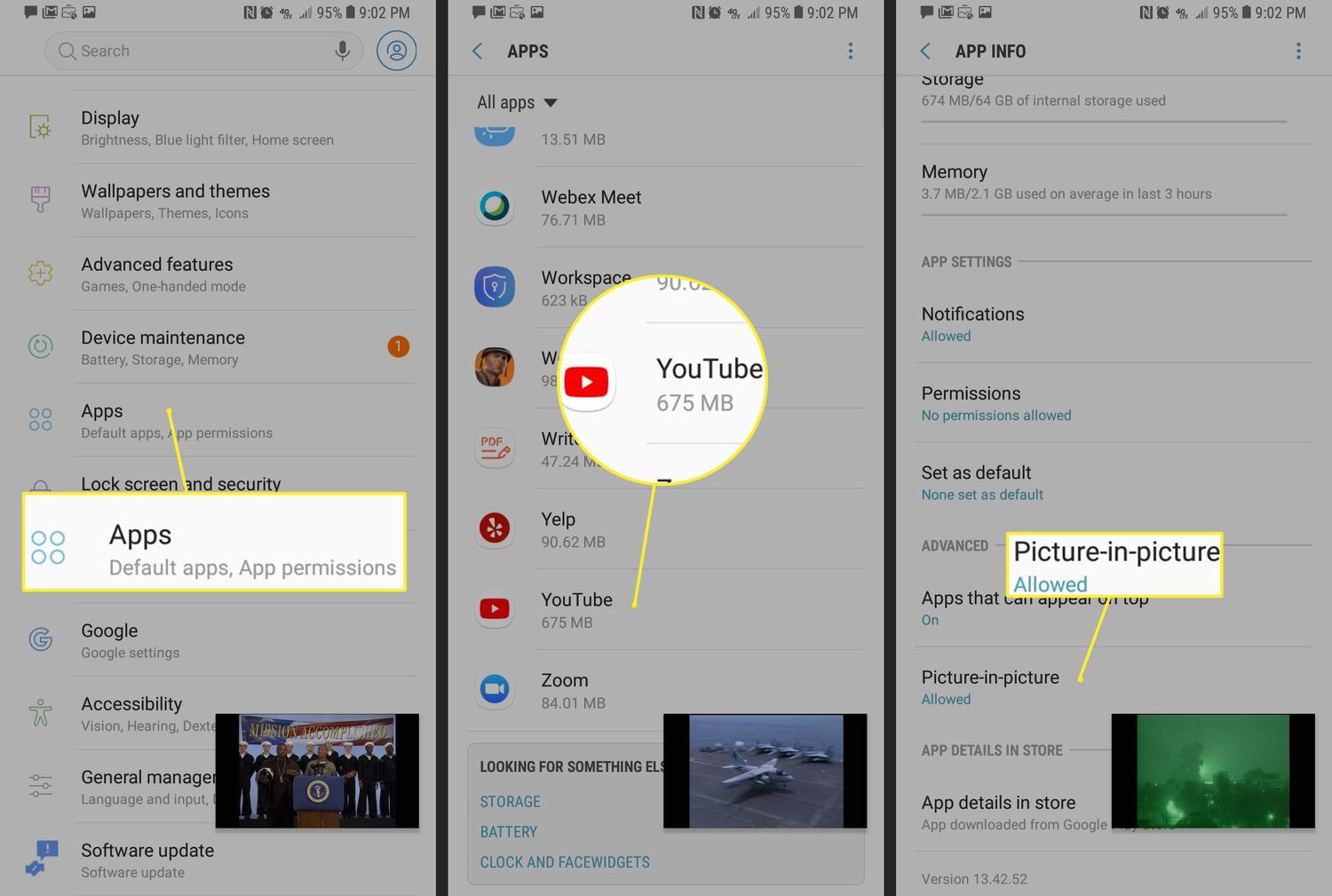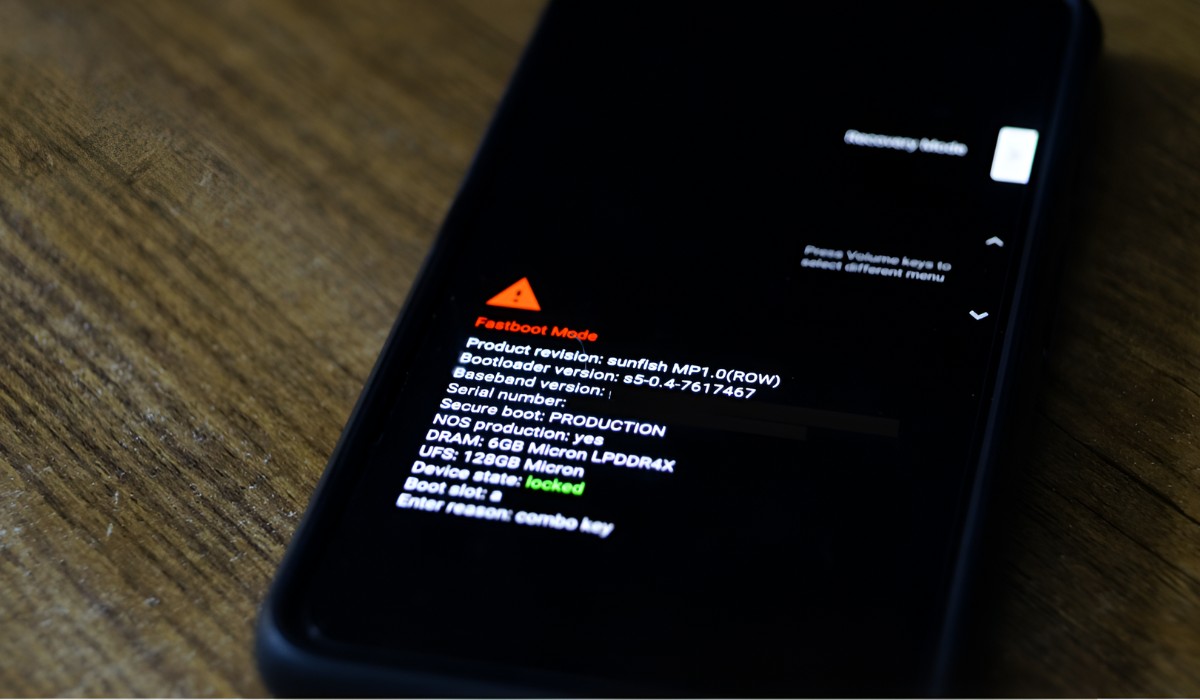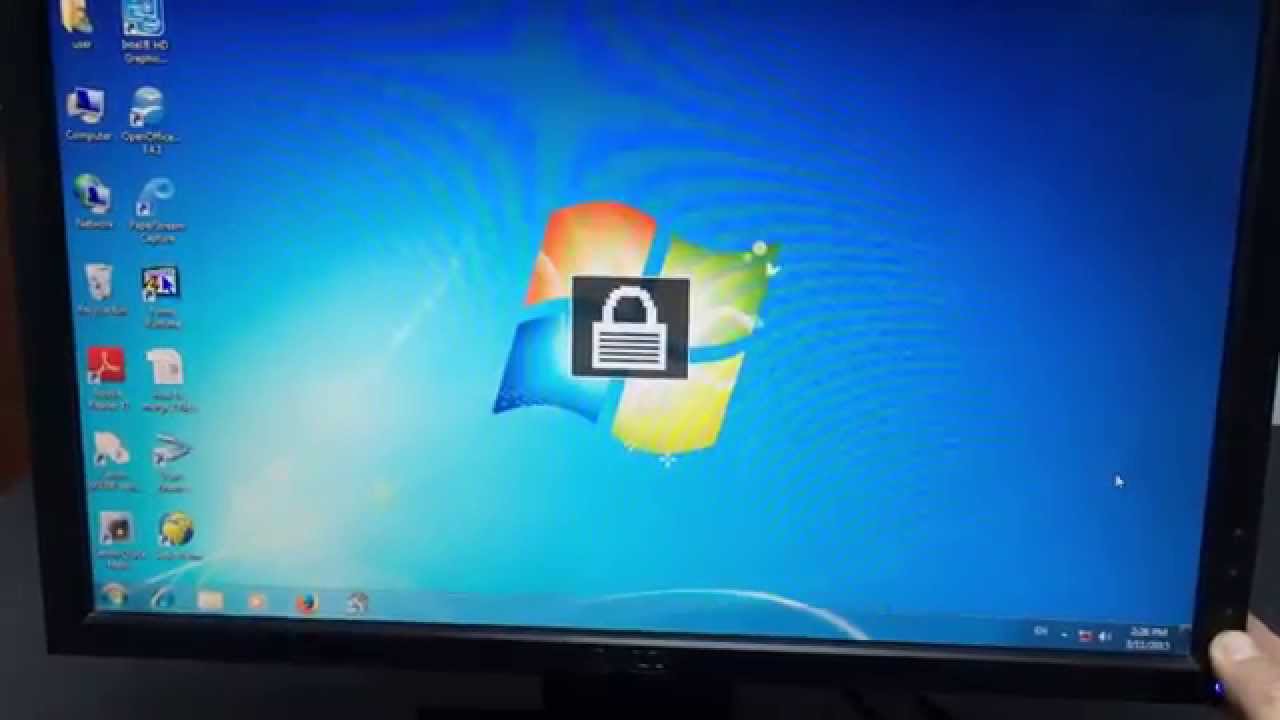Introduction:
Have you ever come across a captivating video on a website that you can’t seem to download? It can be frustrating when you want to save a locked video for offline viewing, but the website restricts you from doing so. However, fear not! There are methods available to bypass those restrictions and download locked videos from any website.
Locked videos are typically protected from unauthorized downloading to maintain control over their distribution and ensure copyright compliance. While it may seem challenging at first, there are several techniques you can employ to download these videos and enjoy them at your convenience.
In this article, we will explore various methods that allow you to download locked videos from any website. Whether you want to save a tutorial, a training video, or simply preserve a memorable clip, we’ve got you covered.
Please note that some websites explicitly prohibit downloading their videos, and it’s important to respect their terms of service and copyright. Make sure to only use these methods for personal use or when you have proper authorization to download the content.
Now, let’s delve into the exciting world of downloading locked videos and explore the different methods available to accomplish this task.
Understanding locked videos:
Before we delve into the methods for downloading locked videos, let’s first understand what exactly a locked video is. A locked video refers to a video that is protected or encrypted, preventing users from downloading or accessing it freely.
Websites often lock videos to prevent unauthorized distribution, protect copyrighted content, or maintain control over their intellectual property. This can be done through various mechanisms such as disabling right-click options, implementing DRM (Digital Rights Management) systems, or utilizing encrypted streaming protocols.
Locked videos can manifest in different forms and restrictions, including:
- Restricting the download button: Some websites simply disable or hide the download button, preventing users from easily accessing the video files.
- Implementing streaming protocols: Websites may use streaming protocols such as HLS (HTTP Live Streaming) or DASH (Dynamic Adaptive Streaming over HTTP), which divide the video into small chunks and deliver them in a specific sequence. This makes it difficult to download the entire video at once.
- Encrypting the video files: Videos may be encrypted using specialized encryption algorithms that ensure only authorized users can decrypt and access the content.
- Applying DRM technologies: Digital Rights Management systems are used to control the distribution, copying, and playing of digital media files. DRM can restrict access to locked videos or apply usage limitations.
It’s important to be aware that circumventing the protection measures of locked videos may infringe upon copyright laws or violate the terms of service of the website. Always ensure that you have proper authorization or are within the boundaries of fair use policies before attempting to download locked videos.
Now that we have a clearer understanding of what locked videos are, let’s explore the methods you can use to bypass these restrictions and download locked videos from any website.
Methods to download locked videos:
Downloading locked videos may seem like a daunting task, but there are several techniques you can employ to bypass the restrictions and save those videos for offline viewing. Here are some effective methods you can try:
- Using browser extensions: There are browser extensions available, such as Video DownloadHelper and Flash Video Downloader, that can detect and download videos playing on web pages. These extensions add a download button next to the video, allowing you to save it with a simple click.
- Using video downloading websites: Online services like SaveFrom.net and KeepVid allow you to enter the URL of the locked video and generate a downloadable link. These websites work by extracting the video file directly from the webpage and providing you with a link to download it.
- Inspecting network traffic: By using browser developer tools or network monitoring tools like Wireshark, you can analyze the network requests made by the webpage to fetch the video content. This method requires technical knowledge but can enable you to locate and download the video file directly.
- Using screen recording software: If other methods fail, you can resort to screen recording software like OBS Studio or Camtasia. These tools allow you to record your screen while playing the locked video, effectively capturing the content in real-time.
- Extracting from website cache: When you stream a video on a website, it is temporarily stored in your browser’s cache. By locating the cached video file, you can extract and save it to your computer. This method requires navigating through your browser’s cache folder and identifying the correct file.
- Downloading from mobile devices: If you are accessing the locked video on a mobile device, you can try using video downloading apps like TubeMate or VidMate. These apps can detect and download videos played within their built-in browsers.
- Seeking help from third-party software: There are dedicated software applications like 4K Video Downloader and Internet Download Manager that specialize in downloading online videos. These tools often come with advanced features and can handle various video sources and formats.
While these methods can be effective in downloading locked videos, it is important to exercise caution and use them responsibly. Always respect copyright laws and the terms of service of the website you are downloading from.
Now that you have a range of methods at your disposal, you can confidently tackle the challenge of downloading locked videos from any website. Let’s explore these methods further and discover how to implement them effectively.
Method 1: Using browser extensions:
One of the easiest and most convenient methods to download locked videos is by using browser extensions. These extensions are available for popular browsers like Google Chrome, Mozilla Firefox, and Microsoft Edge, and provide a seamless way to grab videos from webpages. Here’s how to use them:
- First, search for and install a video downloader extension compatible with your browser. Popular options include Video DownloadHelper, Flash Video Downloader, and Free Video Downloader.
- Once the extension is installed, navigate to the webpage containing the locked video you want to download.
- The extension will detect the video playing on the webpage and display a download button near it. Clicking on the download button will prompt the extension to fetch and save the video file to your computer.
- Depending on the extension you’re using, you may be presented with options to choose the video quality and format before initiating the download.
- After selecting the desired options, click on the download button, and the video will start to download to your specified destination folder.
Browser extensions are usually straightforward to use and do not require any technical expertise. They provide a convenient way to download locked videos with just a few clicks. However, keep in mind that not all videos on every website can be downloaded using browser extensions, as some websites implement advanced protection measures that these extensions may not be able to bypass.
Additionally, be cautious when installing browser extensions from unknown sources, as they can pose security risks. Stick to extensions from reputable developers or official extension stores to ensure the safety of your browsing experience.
Now that you’re familiar with using browser extensions, you can effortlessly download locked videos from various websites. Let’s move on to the next method and explore alternative approaches to obtain those elusive video files.
Method 2: Using video downloading websites:
If browser extensions are not suitable or unavailable for your browser, you can turn to video downloading websites to download locked videos. These online services allow you to enter the URL of the webpage containing the video and retrieve a downloadable link. Here’s how to use them:
- Begin by navigating to a reputable video downloading website such as SaveFrom.net, KeepVid, or Y2Mate.
- Open a new tab or window and go to the webpage where the locked video is located.
- Copy the URL of the webpage containing the video from the address bar of your browser.
- Return to the video downloading website and paste the URL into the designated text field provided.
- Click on the “Download” or “Generate” button to initiate the process of extracting the video from the webpage.
- The website will analyze the URL and generate a list of available video formats and qualities. Select the desired format and quality from the options provided.
- After selecting the preferred format, click on the “Download” button associated with that format.
- The video downloading website will process the request and generate a downloadable link. Click on the link to start the download.
- The locked video will then be downloaded to your specified destination folder on your computer.
Video downloading websites are a convenient alternative for those who do not wish to install browser extensions or prefer a web-based solution. It eliminates the need for additional software and allows you to download locked videos directly from the website without much hassle.
However, it’s important to exercise caution when using video downloading websites, as some may include intrusive ads, redirect to suspicious websites, or compromise your privacy. Stick to well-known and reputable video downloading services to ensure a safe and reliable experience.
Now that you’re acquainted with using video downloading websites, you have another powerful tool at your disposal to bypass the restrictions and save those captivating locked videos. Let’s move on to the next method and explore alternative approaches to download locked videos from any website.
Method 3: Inspecting network traffic:
If you’re comfortable delving into the technical aspects of downloading locked videos, inspecting network traffic can be an effective method. By using browser developer tools or network monitoring tools like Wireshark, you can analyze the network requests made by the webpage and locate the video file. Here’s how to do it:
- Start by opening the webpage containing the locked video in your browser.
- Right-click on the webpage and select the “Inspect” or “Inspect Element” option. This will open the browser’s developer tools panel.
- Within the developer tools panel, navigate to the “Network” tab.
- Now, play the locked video on the webpage.
- As the video plays, you will see a list of network requests being made in the developer tools panel.
- Look for requests with video file extensions such as .mp4, .avi, or .mkv. These requests typically contain the video files being fetched from the server.
- Once you identify the video file request, right-click on it and select the “Open in new tab” or “Copy link address” option.
- Paste the copied link address into a new browser tab and press Enter to load the video file individually in the browser.
- Once the video file has loaded, right-click on the video and select the “Save video as” or “Save video” option to download it to your desired location.
Inspecting network traffic allows you to locate the direct link to the video file being played on the webpage, bypassing any obfuscation or locks imposed by the website. This method requires a bit more technical knowledge but can be highly effective in obtaining the locked video.
It’s important to note that some websites may employ additional security measures or complex video streaming protocols that make it more challenging to find the direct video link through network inspection. Additionally, this method may not work if the video is dynamically generated or rendered through JavaScript-based players.
Now that you understand how to inspect network traffic, you have a powerful technique in your arsenal to download locked videos. Let’s move on to the next method and explore alternative approaches for obtaining those elusive video files.
Method 4: Using screen recording software:
If other methods fail to download locked videos, you can resort to using screen recording software. Screen recording allows you to capture the video as it plays on your screen, effectively creating a recording of the locked video. Here’s how you can use screen recording software to download locked videos:
- Start by installing screen recording software such as OBS Studio, Camtasia, or Bandicam on your computer.
- Once the software is installed, open it and configure the recording settings according to your preferences.
- Next, open the webpage containing the locked video on your browser.
- Adjust the recording frame or window to fit the area where the video is playing.
- Start the screen recording software and begin playing the locked video on the webpage.
- The software will capture everything within the recording frame or window, including the locked video.
- Once the video has finished playing, stop the screen recording, and the software will save the recording as a video file on your computer.
- Finally, locate the saved recording in the output folder specified in the software settings.
Using screen recording software is a reliable method for capturing locked videos, especially when other options fail to work. However, it’s important to note that screen recording software records the video as it plays in real-time, so the video quality may be dependent on your display settings and the efficiency of the recording software.
Additionally, screen recording is a manual process that requires you to play the video in real-time, which can be time-consuming for longer videos. It also captures any other elements or actions on your screen during the recording, so make sure to eliminate any distractions or unwanted elements before starting the recording process.
Now that you know how to use screen recording software, you have an alternative method to download locked videos from any website. Let’s proceed to the next method and explore additional approaches to obtain those elusive video files.
Method 5: Extracting from website cache:
If you have recently watched a locked video on a website, there’s a chance that the video file is temporarily stored in your browser’s cache. By locating and extracting the video file from the cache, you can download the locked video. Here’s how to extract videos from the website cache:
- Start by opening your web browser and accessing the webpage containing the locked video.
- Once you have watched the video, go to the browser’s settings or preferences.
- Look for the cache or browsing history settings and find the option to clear or view the cache.
- Access the cache folder, which is typically located in a specific directory on your computer.
- Within the cache folder, search for files with video file extensions such as .mp4, .avi, or .mkv.
- Identify the video file by sorting the files based on the date or file size to find the recently accessed video file.
- Copy the video file to a different location on your computer to save it.
- Finally, rename the file with the appropriate video file extension and play it using a compatible media player.
Extracting videos from the website cache can be a hit-or-miss method, as it relies on the assumption that the locked video is temporarily stored in the cache and has not been cleared. Additionally, some websites may use encryption or obfuscation techniques that make it challenging to identify and extract the video file.
Furthermore, this method requires some technical knowledge to navigate and locate the cache folder on your computer. The cache location and structure can vary depending on the browser and operating system you are using.
Keep in mind that accessing and extracting files from the cache folder should be done responsibly, respecting the website’s terms of service and copyright laws. Only download videos that you have the rights to access or when authorized to do so.
Now that you know how to extract videos from the website cache, you have another method to download locked videos. Let’s move on to the next method and explore alternative approaches to obtain those elusive video files.
Method 6: Downloading from mobile devices:
If you prefer to download locked videos from a mobile device such as a smartphone or tablet, there are specific methods and apps available for this purpose. Whether you’re using an iOS or Android device, here’s how you can download locked videos:
- Start by downloading a video downloading app on your mobile device. Apps like TubeMate for Android or Documents by Readdle for iOS are popular options.
- Once the app is installed, open it and navigate to the webpage containing the locked video.
- If the app has a built-in browser, use it to access the webpage. If not, switch to your preferred web browser and open the webpage.
- Play the locked video within the app’s browser or the external web browser.
- Look for a “Download” or “Save” button that appears when the video is playing. This button is usually provided by the app and allows you to download the video.
- Tap on the “Download” or “Save” button, and the app will start downloading the locked video to your mobile device.
- After the download is complete, you can access the video from within the app or through your device’s media gallery.
It’s worth mentioning that video downloading apps for mobile devices are not always available through official app stores, so it’s essential to download them from trusted sources. Additionally, downloading videos from mobile devices may have limitations depending on the security measures and restrictions implemented by the website hosting the video.
Make sure to respect copyright laws and the terms of service when using video downloading apps on your mobile device. Only download videos that you have the rights to access or when authorized to do so.
Now that you understand how to download locked videos from mobile devices, you have an efficient method to obtain those captivating videos even when you’re on the go. Let’s move on to the next method and explore alternative approaches to download locked videos from any website.
Method 7: Seeking help from third-party software:
When all else fails and the locked video seems impossible to download using other methods, you can turn to dedicated third-party software for assistance. These software applications are specifically designed for downloading online videos and offer a range of advanced features. Here’s how you can use third-party software to download locked videos:
- Start by researching and selecting a reliable and reputable video downloading software. Some popular options include 4K Video Downloader, Internet Download Manager (IDM), and Freemake Video Downloader.
- Download and install the chosen software on your computer, following the instructions provided by the developer.
- Open the software and navigate to the webpage containing the locked video.
- Copy the URL of the webpage from the address bar of your browser.
- Paste the URL into the designated area within the software interface.
- Choose the desired video quality, format, and any additional settings offered by the software.
- Initiate the download process by clicking on the “Download” or similar button within the software.
- The software will analyze the URL and start downloading the locked video to your computer.
- Once the download is complete, locate the saved video file in the output folder specified in the software settings.
- Finally, open the video file with a compatible media player to enjoy the downloaded locked video.
Third-party video downloading software often provides additional features such as batch downloading, download speed control, and the ability to download videos from various sources and platforms. They can be a powerful tool when other methods fail or for more advanced downloading needs.
When using third-party software, be cautious and download it from trusted sources to ensure the safety of your computer and protect against malware or viruses.
Remember to respect copyright laws and the terms of service of the websites you are downloading from. Only download videos that you have the rights to access or when authorized to do so.
With the help of dedicated video downloading software, you have an extensive and efficient approach to downloading locked videos from any website. Now, let’s wrap up our exploration of the different methods available.
Conclusion:
Downloading locked videos from websites may initially seem challenging, but with the right methods and tools, it becomes possible to bypass those restrictions and save those captivating videos for offline viewing. Throughout this article, we have explored various methods to download locked videos from any website.
From using browser extensions and video downloading websites to inspecting network traffic and utilizing screen recording software, there are several effective approaches available. Additionally, extracting videos from website cache, downloading from mobile devices, and seeking help from third-party software provide alternative solutions to tackle the task of downloading locked videos.
It’s important to note that while these methods can be effective, it is essential to respect copyright laws and the terms of service of the websites you are downloading from. Ensure that you have the right authorization or are within the boundaries of fair use policies before attempting to download locked videos.
Remember, each method has its own advantages and limitations. Some methods may work better than others depending on the specific website and video you are trying to download. It may require trial and error, as well as a bit of technical knowledge, to find the most suitable method for a particular locked video.
By employing these methods, you can expand your ability to download locked videos and enjoy them at your convenience. Whether you want to save educational videos, training materials, or simply preserve memorable moments, these methods provide you with the freedom to access and save locked videos from any website.
Now that you’re equipped with these valuable techniques, go ahead and explore the various methods discussed in this article. Unlock the world of locked videos and make the most out of your online viewing experience.

























